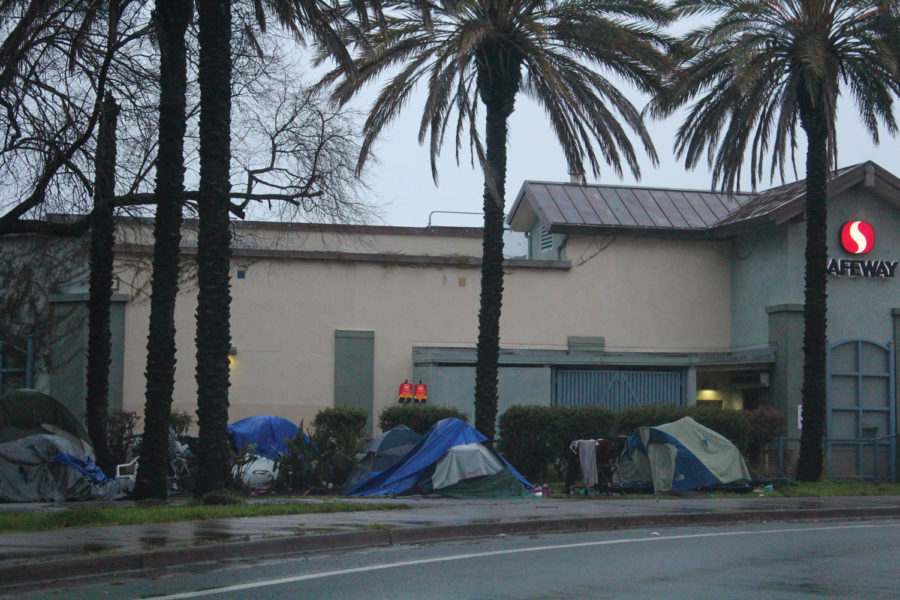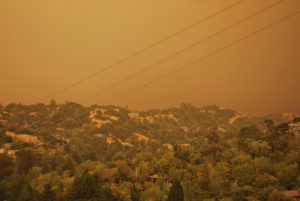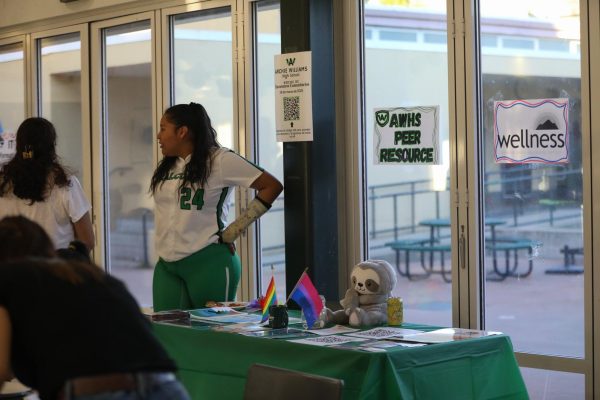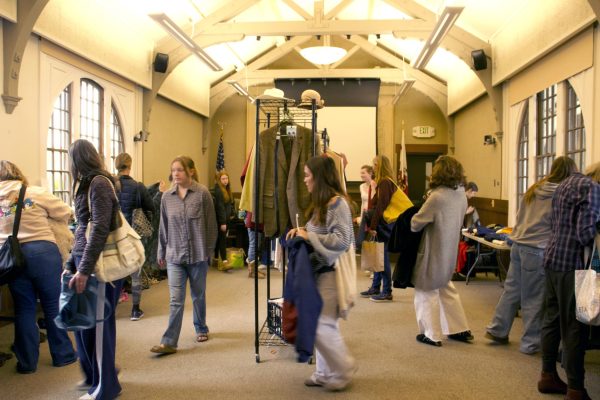Fighting for a place to call home: Inside the Albert Park encampment’s forced closure
Albert Park Encampments during the first attempted closure on Mar. 20.
Albert Park, located in San Rafael, serves the local community by hosting programs from summer camps to recreational leagues. During the winter months, when the park experiences less use, the local homeless population sets up camp. A vote by the city council on March 6 determined the camp was a public safety concern, and planned its closure for March 13.
A restraining order stemming from seven plaintiffs in the camp placed on the city of San Rafael postponed the closure of the camp. However, a court hearing on March 20 made the final decision when a district judge waived the order. The city’s intervention began at 7 a.m. on March 24, and moved the 20 known homeless encampment structures by that evening, police involvement starting that night.
Although only 30% of Marin county’s homeless population resides in San Rafael, the city of San Rafael observed a 8.4% rise in homelessness from 2019 to 2022.
While the Albert Parks closure might seem like one of the first relocations in Marin, it is just the most recent in a string of closures. For years, Marin officials have forced the homeless population to seek out new places to live. The forced relocations began under the Highway 101 bridge and in a camp located in Sausalito.
Chris Hamelton, manager of the Spahr Center harm reduction faction, provides clean needles, HIV testing, and outside resourcing to get unhoused individuals the assistance they need. After witnessing multiple of these shutdowns and reallocations, he has come to the realization that the homeless population just needs a consistent place to stay.
“…They are just looking for somewhere they can stay awhile with a sense of routine,” Hamelton said.
As minimal park activity occurs during Winter months, Albert park presented the perfect location to accommodate San Rafael’s increasing homeless population. However, during warmer months, San Rafael residents began to complain about the encampment.
After constant complaints, the City Council voted to shut down the 20 campsites in Albert Park. The San Rafael City Council claimed the campsites are a threat to health and safety, following protests from bordering communities, such as San Rafael Childcare and Recreation.
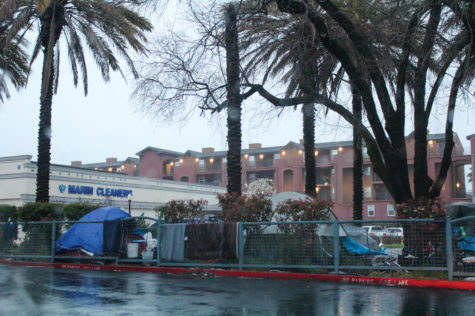
Chris Hess, the Assistant Director of Community Development in San Rafael, has been a figurehead in San Rafael’s housing and homeless programs. When the city vacates the residents of Albert Park, they fall back on an outdated ordinance.
“[San Rafael] has a “no camping ordinance”. But, we don’t enforce it unless they are camping in particular sensitive areas,” Hess said.
“Sensitive areas” now encompass community parks, including both Boyd and Albert park in San Rafael, and their open spaces. Due to the closures and relocations, there are now few places left for the estimated 1400 unhoused individuals in San Rafael.
As most of the complaints derive from neighboring community members, the unsheltered community doesn’t know where to find refuge. The city is attempting to combat this issue by providing 1.1 million dollars to the Affordable Housing Project at 190 Mill Street, founded by Homeward Bound of Marin known as “Jonathan’s House.”
“[Homeward Bound of Marin] operates a building with 40 units of permanent housing, with no time limit, residents paying a subsidized rent. They [also] have a different floor with 40 shelter beds for a transitional space as many look to find permanent housing,” Hess said.
San Rafael, alongside various nonprofits and charities, has sparked initiatives to aid the affordable housing effort. The city plans to outsource non-profit organizations to make the move easier and safer for those involved. They typically bring in organizations to find housing and resources for the former-camp residents, such as the Spahr Center, which focuses on the LGBTQ+ community and HIV prevention.
According to the National Alliance to End Homelessness, unsheltered people are often the victims of domestic abuse, traumatic childhoods, drug abuse, or mental illness. These domestic issues make it difficult for most to stay in their former housing conditions.
Seeing the San Rafael homeless population moved from camp to camp, Hamelton wants to remind the neighbors that “it’s really important for all of us to keep in mind that homeless people are people. It’s important to maintain a humane and compassionate outlook.”
With the Albert Park homeless encampment shutting down indefinitely, San Rafael hopes to bring in outside resources and counselors to provide help to anyone who needs it when moving. Police involvement will only occur for those unwilling to leave.
As homeless camps continue to close around Marin, the unhoused population is looking for places to go. Hamelton, after seeing many closures just like that of Albert Park, wants people to keep in mind the gravity of the situation for those unhoused.
“Pushing people from one site to another doesn’t fix the problem, it just disrupts the continuity in their lives,” Hamelton said.

Aler Giffin is a senior at Archie Williams High School and has been a part of the journalism program for three and a half years now. In his free time he...


